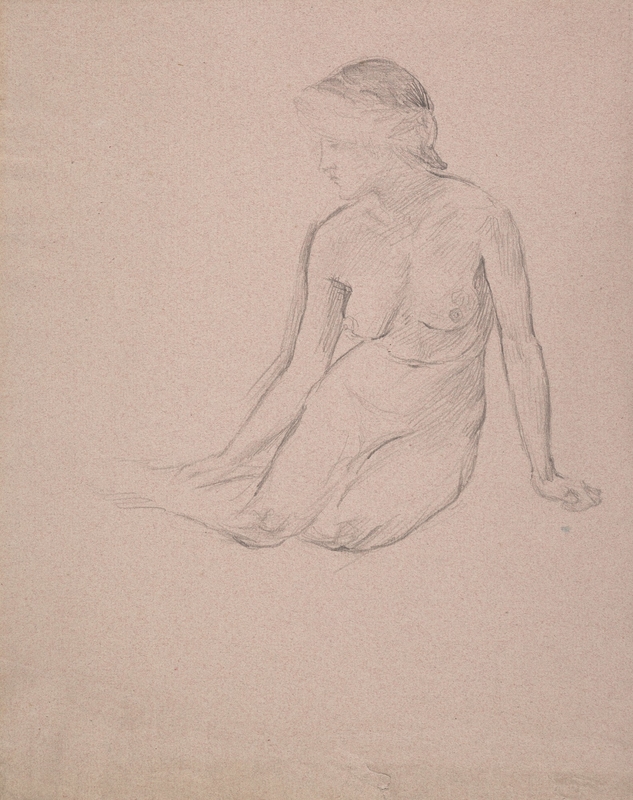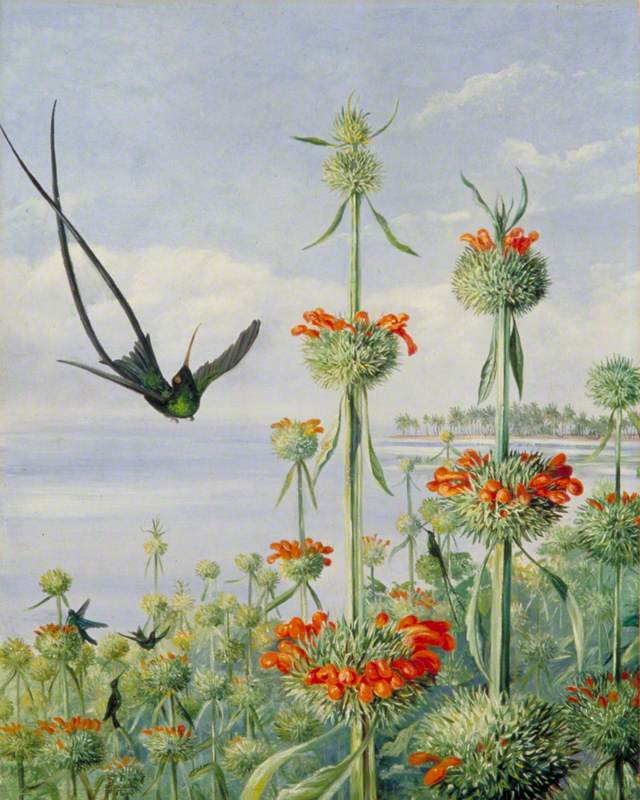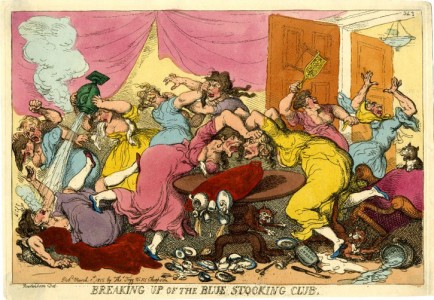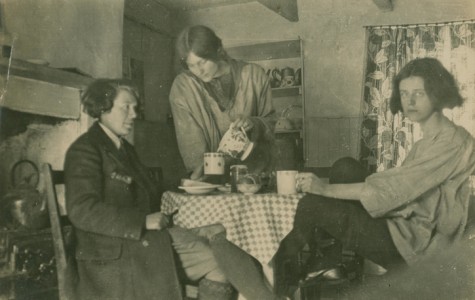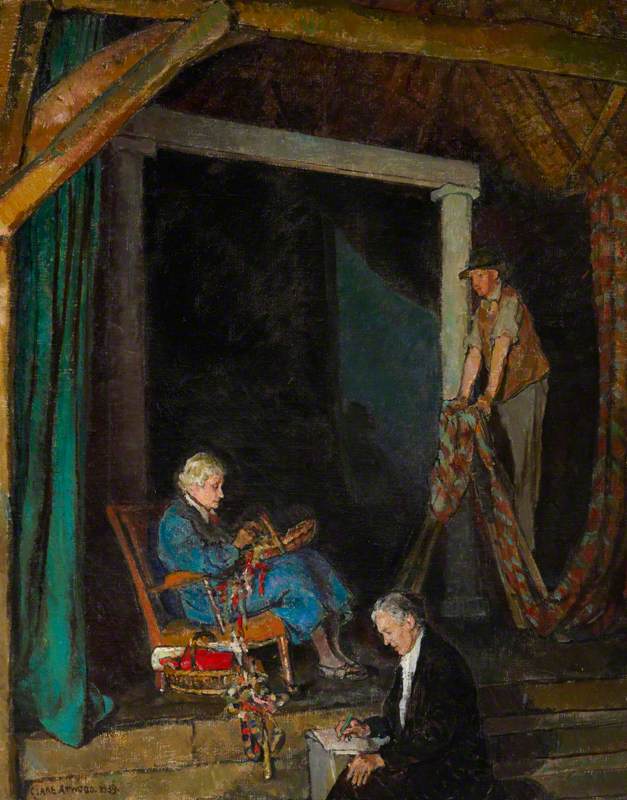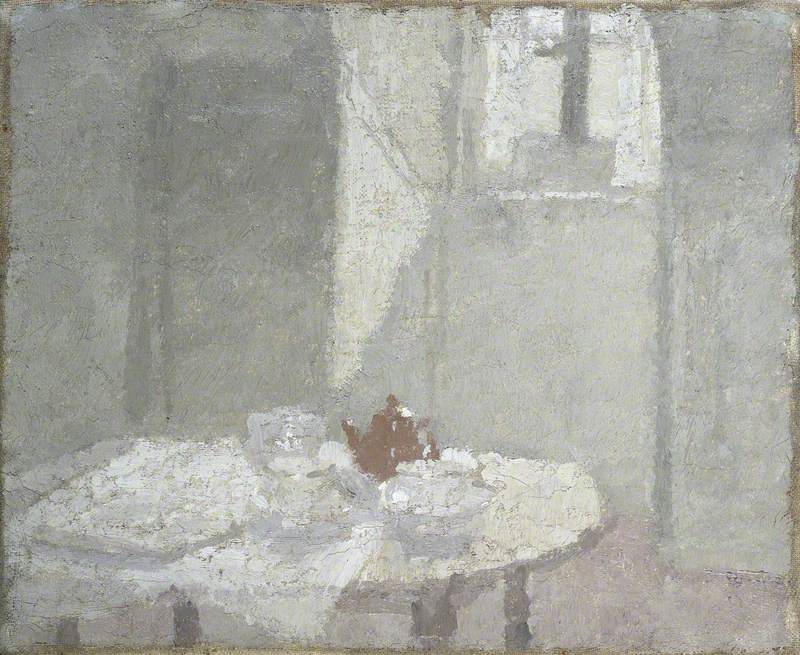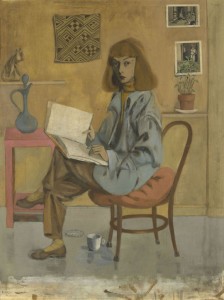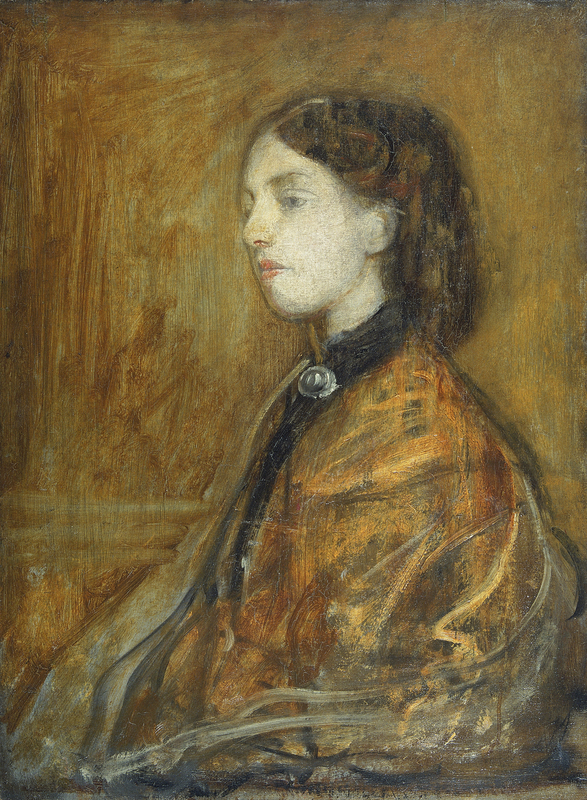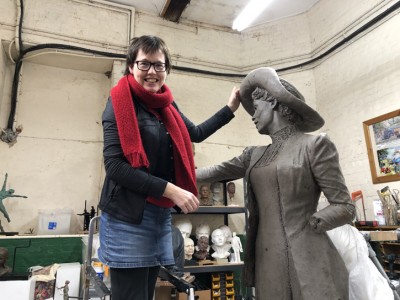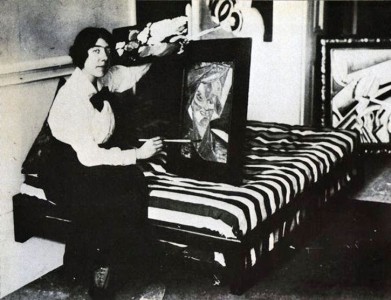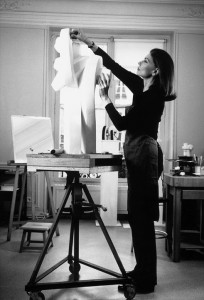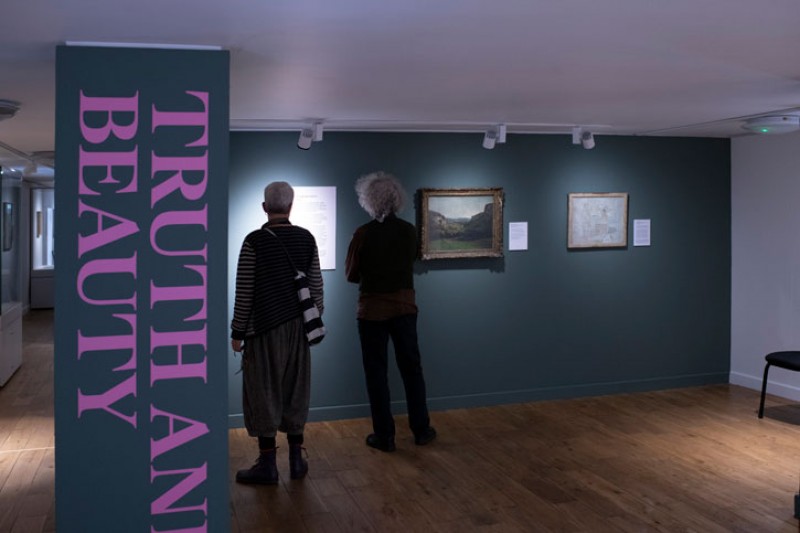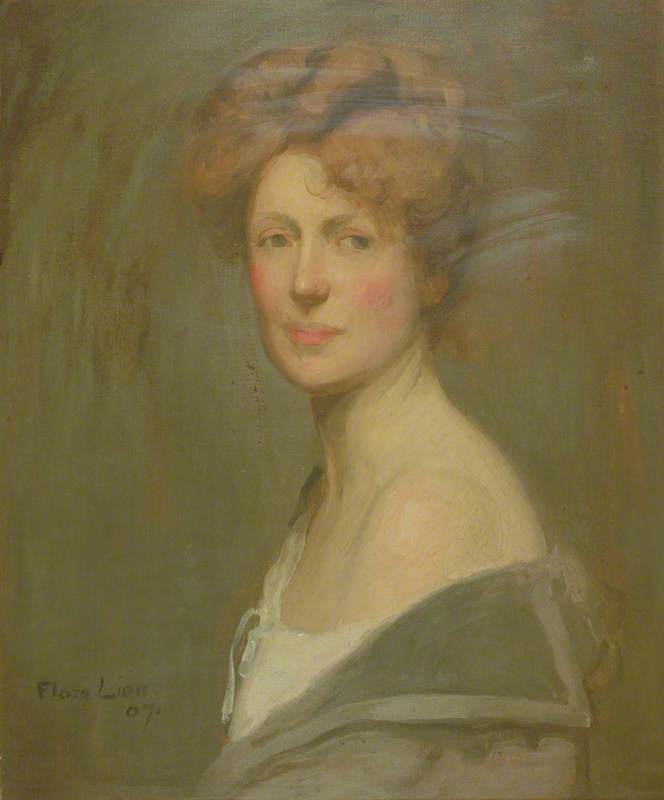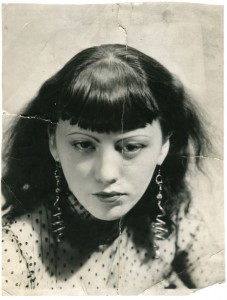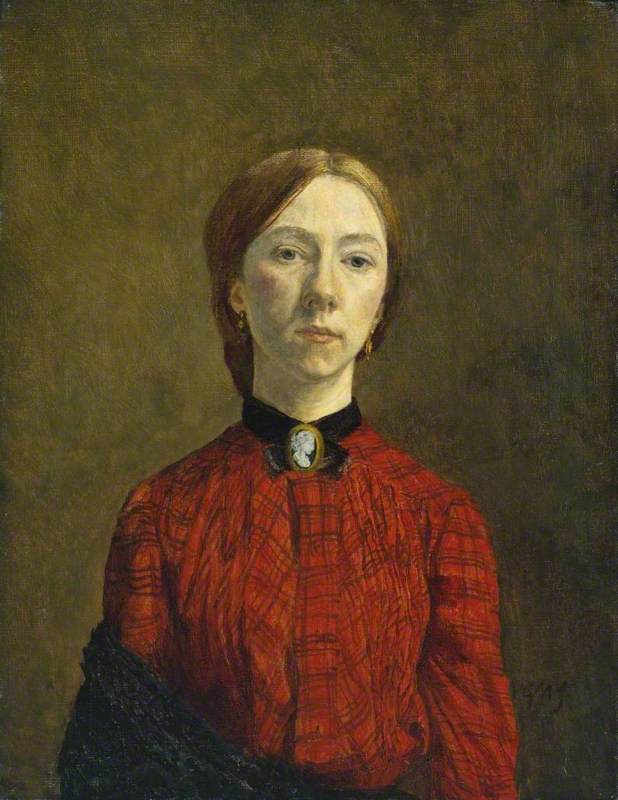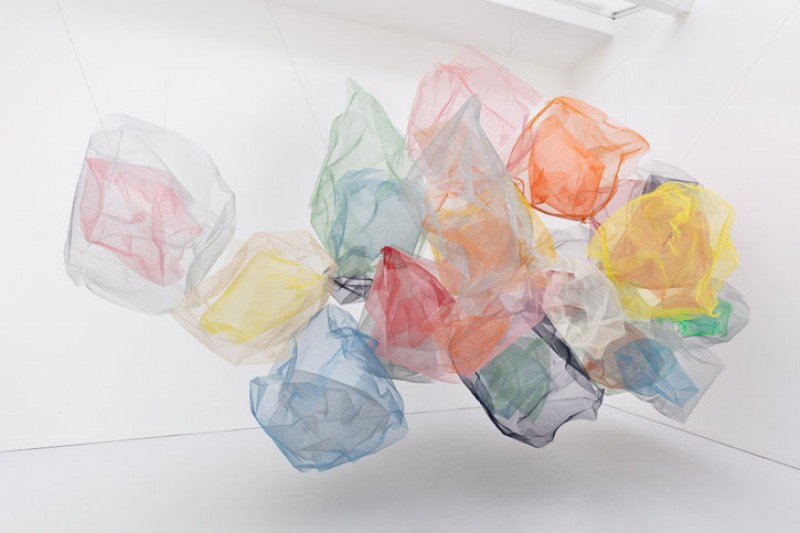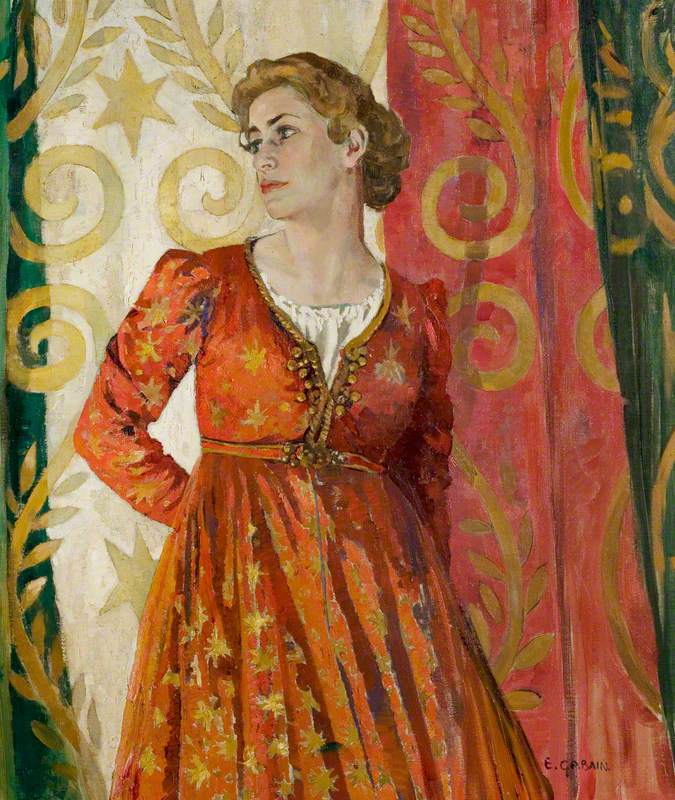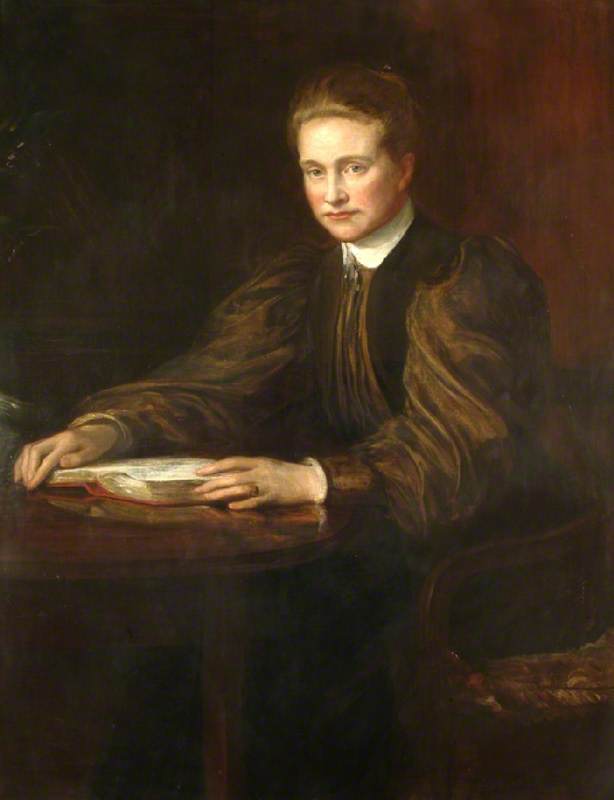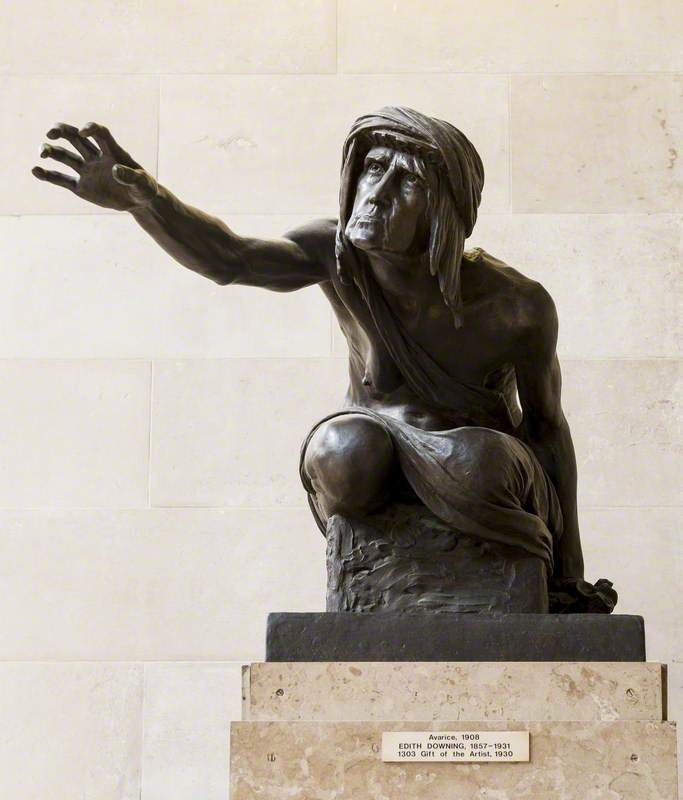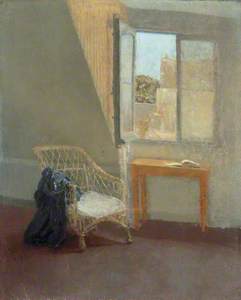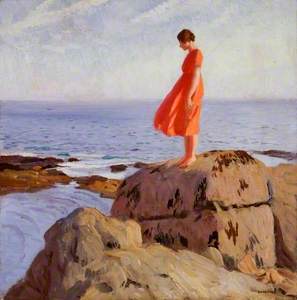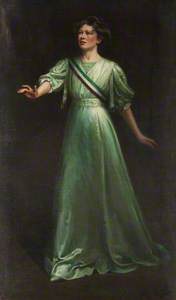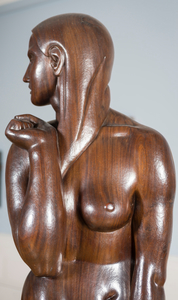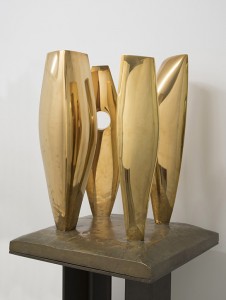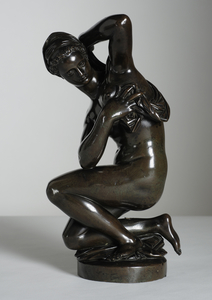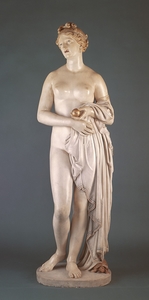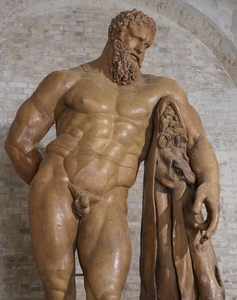As the 1900s began, women were poised to take their place as artists in numbers never seen before. Art education had opened up by the end of the last century, and – for those who were able to able to afford it – the prospect of training seriously became a reality.
By the time Gwen John enrolled at the Slade School of Fine Art in the mid-1890s, two-thirds of the students were women. A photograph taken on the steps of the Slade building in 1905 shows the artist and Professor Frederick Brown amongst a sea of female students.
Women students at the Slade School of Fine Art
1905, photograph by unknown photographer 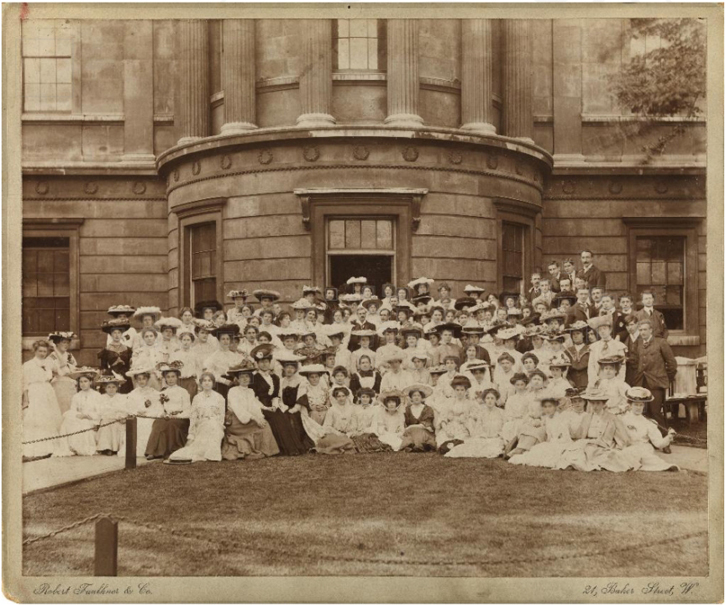
Nevertheless, for women of this time, artistic achievement was harder won than for men (a story that was to remain the same throughout the century). When we look at the Slade students of 1905, in their cumbersome long dresses and large, elaborate hats, we are reminded of a comment often misattributed to Ginger Rogers – an early-twentieth-century star of the moving pictures. While Fred Astaire won huge critical acclaim for his dance routines with Rogers, she had to perform the same steps, 'but backwards, in high heels.'
As their restrictive costumes suggest, women artists were not on equal terms with their male contemporaries, even at a progressive art school such as the Slade. Although women artists had been granted access to draw and paint from the life model, they could only study the male body half-draped or partially clothed, as seen in Thomas J. Gillott's painting below.
For most of the next century, women's artistic work remained undervalued, though certain female figures would become exceptions and break through the art establishment's glass ceiling. The status of women in the art world in the early 1900s directly reflected the debate over women's rights and roles in wider society. At the turn of the century, this reached a pitch of intensity and culminated in violence as part of the campaigns for women's suffrage.
In Edwardian Britain, women's bodies – their control over them and their representation in culture – became a battle played out in politics, on the streets, and in art. Women's suffrage campaigners demonstrated on the streets, and some militants took violent action. When they went on hunger strike in prison they were force-fed: a brutal and physically damaging process.
Suffragette Committee Meeting
1906
Daily Mirror (active since 1903) 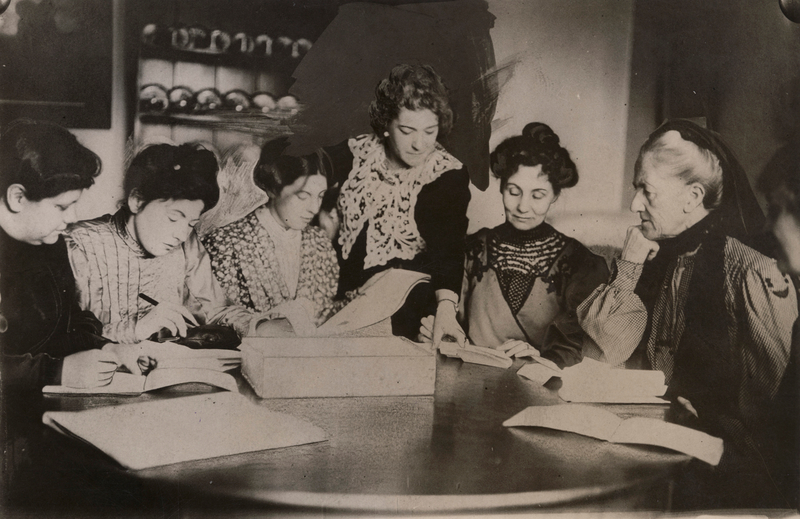
Although they did not know it yet, those vehemently opposing women's freedom were fighting against an unstoppable tide. In part this was due to the opening up of education, but also the physical freedoms newly available to and increasingly demanded by women.
As the old century had drawn to a close, representations of the 'New Woman' appeared in plays, in the newspapers – a caricature of an increasingly recognisable type, living independently, with her intellectual aspirations, bicycle and corset-less dress. Developments in transport also meant that women artists could travel to train and work in unprecedented numbers. New technologies of communication and the media (for example, the telephone, and art journals such as Studio International) meant that one could find out what was happening in galleries around the world.
A Corner of the Artist’s Room in Paris
1907–1909
Gwen John (1876–1939) 
A massive cross-pollination of artistic endeavour took place that makes the first years of the twentieth century some of the most exciting in art history. The mecca for many was Paris. The dominance of the most progressive French modern art – Impressionism and Post-Impressionism – from the later-nineteenth century, the marketing of the city as a spectacle, which offered both pleasure and subject matter for the artist, and the availability of cheap studios to rent, meant that women artists trained and even settled there in huge numbers in the 1900s.
Amongst the many women artists who gained notoriety or emerged as talents during this decade, continue scrolling to learn about seven exceptional individuals...
Mary Cassatt (1844–1926)
From a wealthy Pennsylvanian family, Mary Cassatt could afford to pursue an artistic journey. In the 1860s, she moved to the French capital and made a name for herself as a colleague of Édgar Degas. She shared his interest in compositional risk-taking, bold yet sensitive drawing, and exhibited alongside the Impressionists.
Cassatt achieved something singular and monumental in art history. Childless and unmarried herself, her portrayal of mothers with their children, a subject she worked on almost exclusively after 1900, focuses on the touches exchanged between them and reimagines the idea of physical intimacy in modernism.
As Richard Brettell argues, no artist in the West outside the genre of Christian Madonna and child paintings 'treated this subject with such subtlety and probity.' By 1904, Cassatt was so much an established and admired figure in the French art world that she was awarded the Légion d'Honneur.
Gardner held by his mother
c.1899, drypoint on paper by Mary Cassatt (1844–1926) 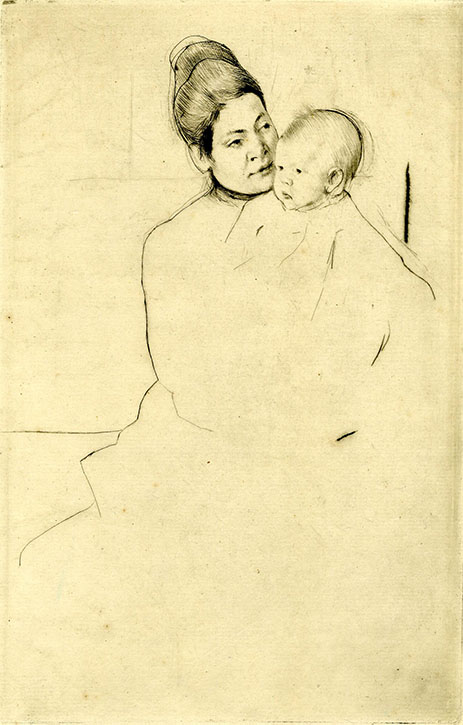
Cassatt is still not well-represented in collections in the UK, which only hold two of her early paintings and nothing from the later part of her career.
Eva Francis (1887–1924)
In 1903, Eva Francis created a tiny, yet exquisite oil painting Snowdrops and Violets. From a younger generation, Francis' work seems to encapsulate a conventional idea about femininity in the 1900s: what could be more acceptable for a woman artist than to paint spring flowers?
Francis was an exhibitor at prestigious bodies, including The Royal Academy, the Royal Institute of Painters in Watercolours and the Society of Women Artists, yet her work is now little known and her reputation was indicative of the perils of being a woman artist at that time. For women, following the expected artistic route (and her few surviving works are delicate, academic, small-scale flower paintings) meant enclosure in a double bind: feminine and conventional could mean insignificant twice over.
Vanessa Bell (1879–1961)
For Vanessa Bell who, like Francis, was also branded with the same feminine reputation, the early foray into intimate and 'womanly' figurative subject matter would transform into a brief period as an avant-garde innovator. Only six years later would she paint one of the first abstract works made in Britain.
Sister of the modernist writer Virginia Woolf, Bell chose to work in the sister art of literature: painting. In 1907 she married the painter Clive Bell, though their marriage would become an open one.
She founded the Friday Club in 1905 as a forum for the discussion and exhibition of modern art. She hoped this group would emulate the cultural stimulus of a Parisian café, and it ran parallel to the Thursday Club instigated by Bell's brother Thoby Stephen, which brought together that mixture of literary and artistic figures we now know as the Bloomsbury Group.
Figure Group with the Artist, Another Woman and Two Children by French Windows
Vanessa Bell (1879–1961) 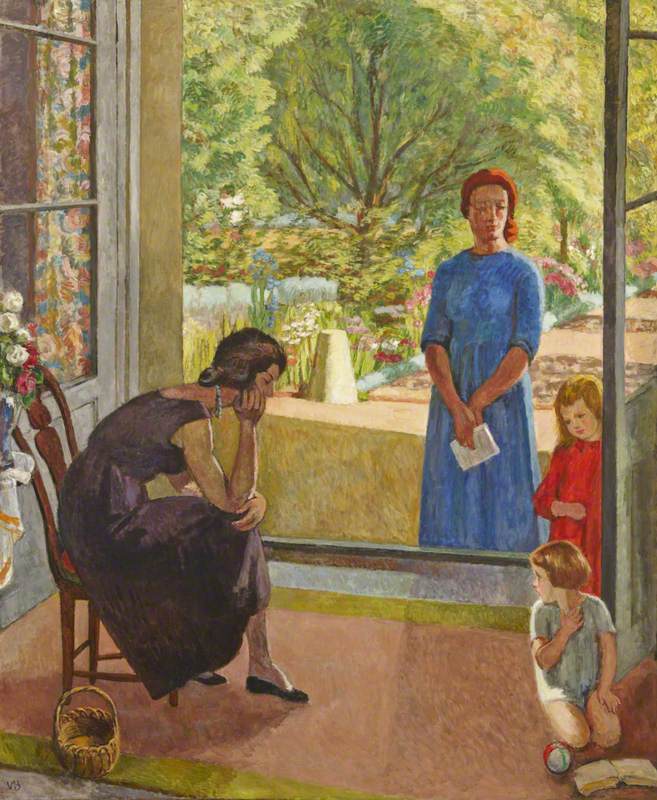
Among the women artists involved in Bell's Friday Club were Clare Atwood and Edna Clarke-Hall (who had trained with Gwen John at the Slade), and Helen Saunders, who was to show with the club just before she became a founder member of one of the most exciting avant-garde groups of the 1910s – the Vorticists. Unfortunately, as we will see, her reputation was eclipsed for many years afterwards by the male artists she worked alongside.
Interior Scene, with Clive Bell and Duncan Grant Drinking Wine
Vanessa Bell (1879–1961) 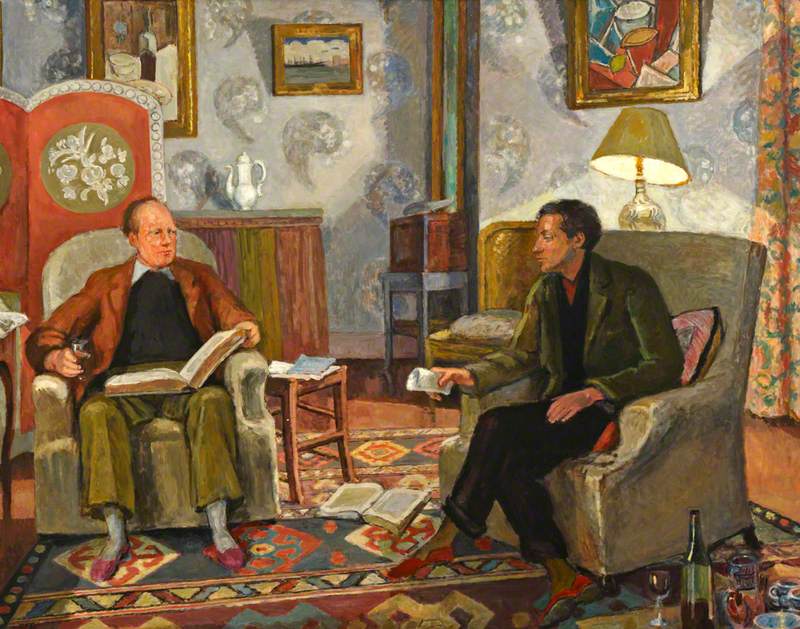
Laura Knight (1877–1970)
There are always those women who battle through astonishing odds, signalling that the talented will succeed despite all. Although as the feminist art historian Linda Nochlin famously observed in 1971 in her essay 'Why Have There Been No Great Women Artists' – the exception does not prove the rule.
The fact that some women, such as Laura Knight, do prevail in their own lifetime, does not mean that all truly talented artists will, and, for women, no matter the accolades they enjoyed, posthumous reputation is also harder won and maintained.
Knight, who was in her early twenties as the new century began, living in Staithes, North Yorkshire (where she painted the fishing fleets) had lost nearly everything already. By 1900 she had no family, save one surviving sister, no stable home or financial support, and was left to fend for herself. Nevertheless, in 1903, she exhibited for the first time at The Royal Academy, and by the end of the decade, she was financially secure due to the success of her art and her work hung in the British section of the Venice Biennale.
Knight, in common with a number of the women artists of this period, had no children. We cannot know, but perhaps her early experience of poverty and insecurity influenced her decision. She chose to marry a fellow artist who wanted her to fulfil her ambition rather than become a mother. Comparing Knight to Vanessa Bell, who had two sons and a daughter but also a private income, servants and space, the two women's lives had notable differences.
Ethel Wright (1866–1939)
The fight for women's suffrage is the setting in which Ethel Wright's portrait of the feminist leader, campaigner and activist Christabel Pankhurst should be understood. In this painting, public heroism is signalled through Pankhurst's grand rhetorical gesture. However it is also allied to 'womanly' elegance and civilisation – skilfully countering the vicious caricatures of suffragettes in some sectors of the press – through the high polish of Wright's style and the sitter's graceful dress.
During her long career, Wright's practice evolved. In the late-nineteenth century, she exhibited as a society portraitist at The Royal Academy, and although she continued to exhibit at the RA, her portraits would become increasingly political. In her painting of Pankhurst, she combined the academic style that had won her some success at the Academy with radical subject matter. The painting was shown at the Women's Exhibition organised by the suffragette's Women's Social and Political Union (WSPU) in 1909.
Only two years later, Wright had all but jettisoned academic painting for a version of Fauve-influenced modernism. Her portrait of another prominent suffrage campaigner, Una Dugdale Duval, was shown with the experimental Rhythm group in 1911, one of the many new modernist groups whose members – though not French themselves – were influenced by visits to Paris.
The Music Room, Portrait of Una Dugdale Duval
c.1912, oil on canvas by Ethel Wright (1866–1939) 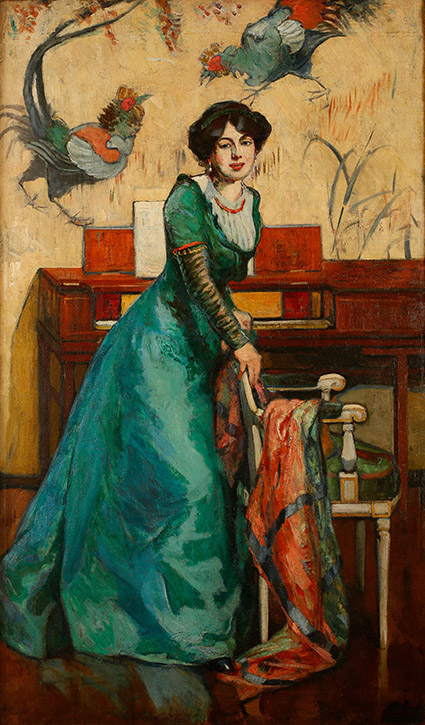
Paula Modersohn-Becker (1876–1907)
Blazing talent also drew the young Paula Modersohn-Becker to Paris in the winter of 1899–1900. A prodigious artist, she left 560 paintings after her death at the age of only 31.
Self-Portrait Nude with Amber Necklace
1906, oil on cardboard by Paula Modersohn-Becker (1876–1907) 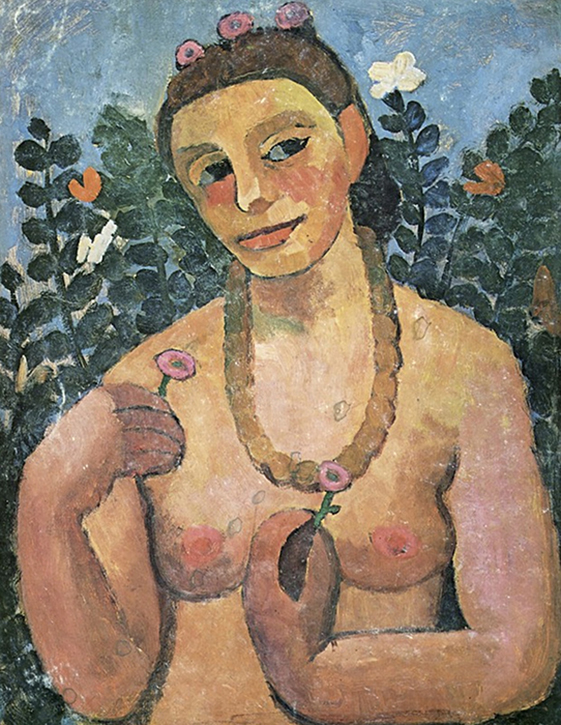
Born in Dresden, she recognised that the kind of work she needed to make meant experiencing the art world in the French capital. Her marriage to a fellow painter – Otto Modersohn – did not bring with it the alliance of artistic aims that she had hoped. Her art was always the more compelling and demonstrated an original vision, the paring back of form and dense colour creating a remarkable intensity, whether in landscape, still life or figure studies.
This small painting was given to Somerville College, Oxford by the German Jewish classicist Lotte Lobowsky in gratitude for their support after she escaped from the Nazis to Britain in the 1930s. That Modersohn-Becker is represented in UK collections is thanks, then, to women's often-unacknowledged contribution as art collectors.
Landscape with Windblown Trees
Paula Modersohn-Becker (1876–1907) 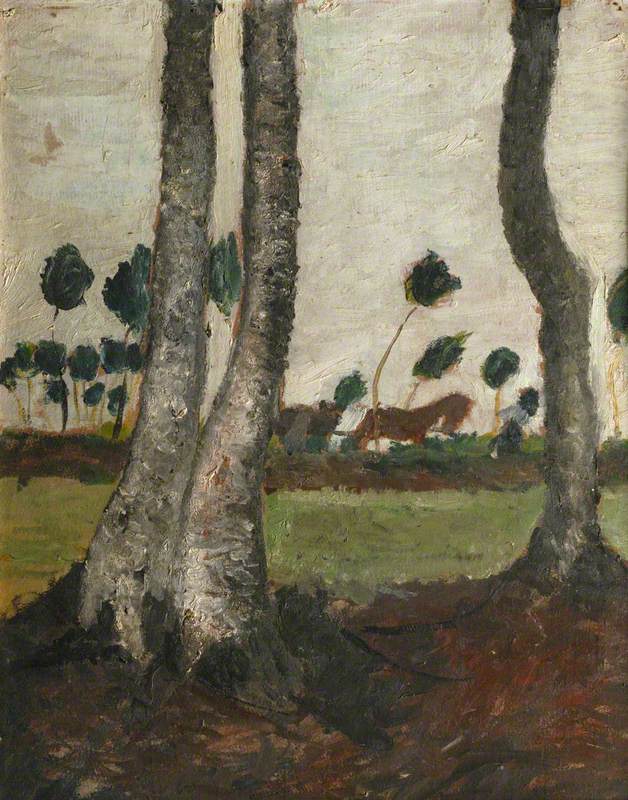
Modersohn-Becker's letters tell of her anguished struggle to reconcile her sense of her own potential as an artist with family life. The idea of motherhood preoccupied her, and led her to paint two ground-breaking self-portraits, nude and pregnant (only one of which survives), which she made before she actually conceived in 1906. These were the first-ever portraits painted by a woman of her own body in this condition. Modersohn-Becker died of an embolism in 1907, a few weeks after giving birth to her only child.
Self-portrait on the sixth wedding anniversary
1906, tempera on canvas by Paula Modersohn-Becker (1876–1907) 
Gwen John (1876–1939)
From the small Welsh town of Tenby, Gwen John's determination to become an artist encouraged her to move to London, followed by Paris, where she settled in the early 1900s.
The misconception that she was motivated by a desire for reclusiveness has taken hold, but making an existence on your own terms – which for a creative artist necessitates long, uninterrupted stretches of time alone – is not the same as withdrawing from life. And, after all, there are much better places to be a recluse than the city of light: staying in Tenby, for example.
In Paris, John met Fenella Lovell, who also enjoyed dressing up for the studios and cafés of artistic society, and sometimes worked as an artist's model. Whether John liked her sitter or not might be biographically interesting but does not account for the sheer power of this painting.
The figure is slight and upright, as opposed to, say, the soft, fecund languor of a Renoir. She is a very modern nude, yet not a figure of explicit desire in the way of Picasso's brazen mask-faced Demoiselles d'Avignon of 1907. Painted in 1909–1910, Fenella's small frame, and indeed her nakedness, makes us aware of her physical fragility, yet the cool, combative look in her eyes removes any presumption that she cannot face down the new century she is living in.
The sense of wary self-possession emanating from her also seems to anticipate the new decade about to begin, which would collapse into world war and the reconfiguration of both the art world and women's role in society at large.
Alicia Foster, Curator
Enjoyed this story? Get all the latest Art UK stories sent directly to your inbox when you sign up for our newsletter.
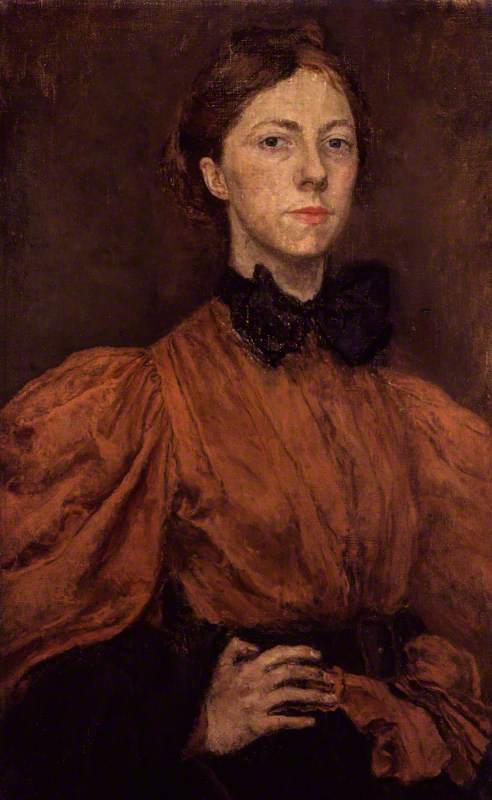
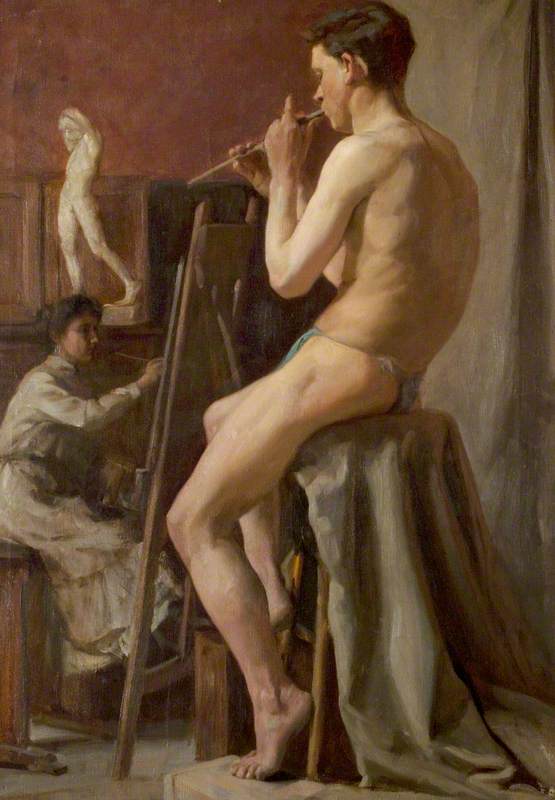
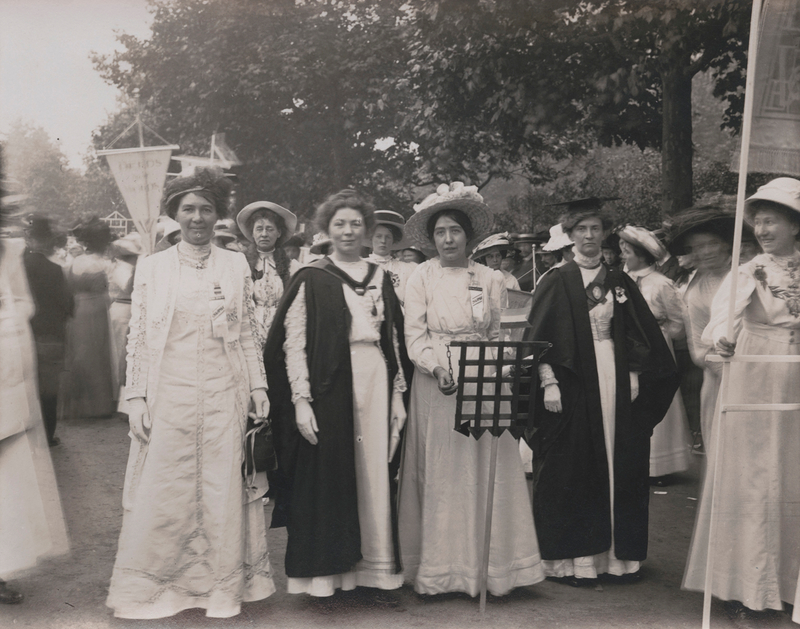
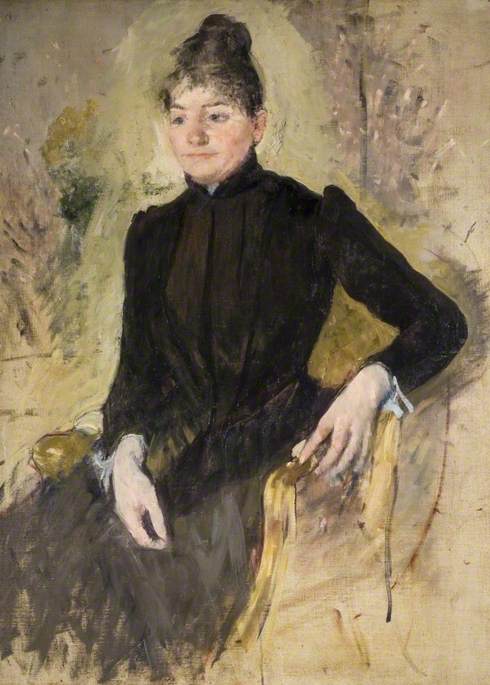
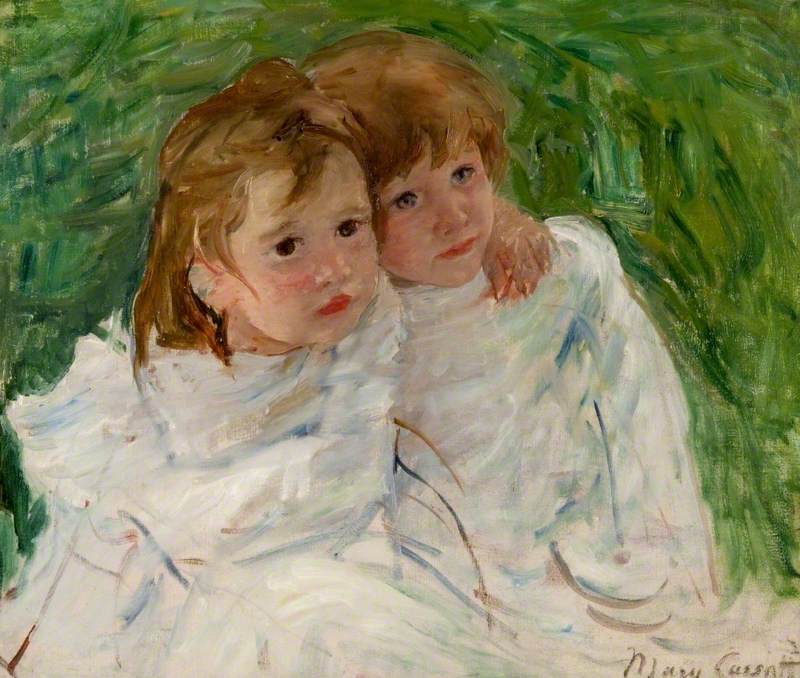


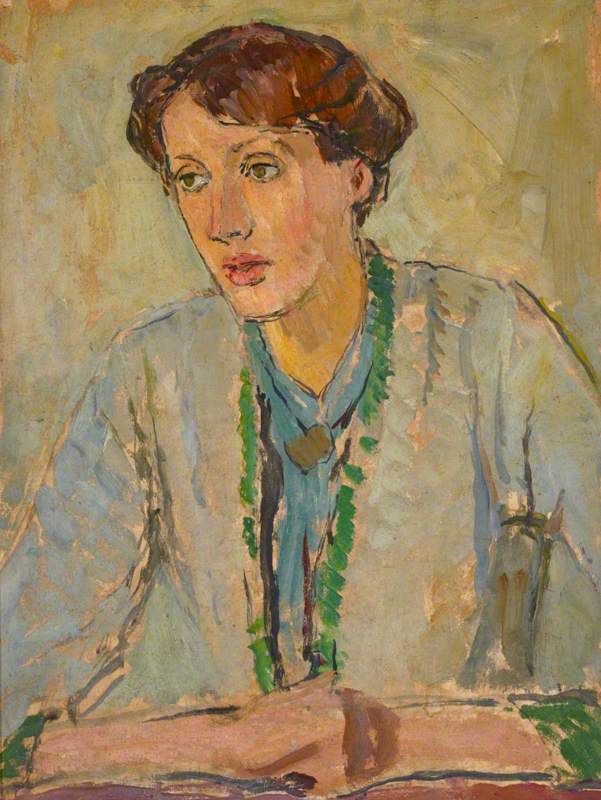
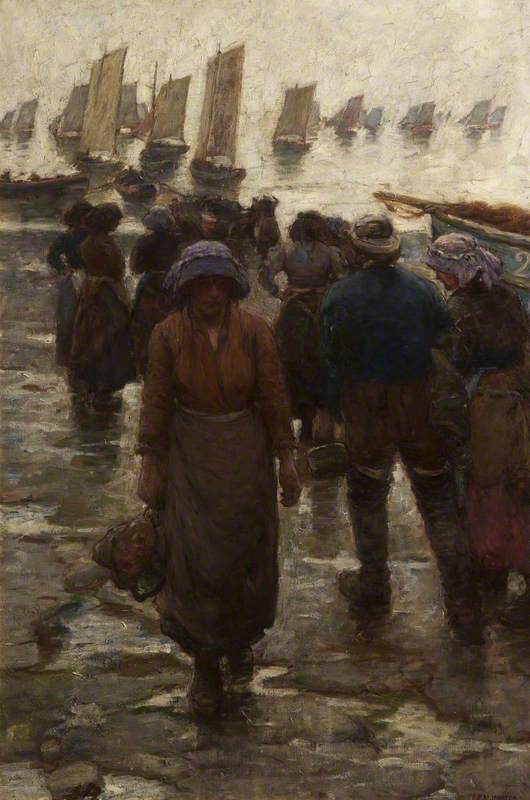


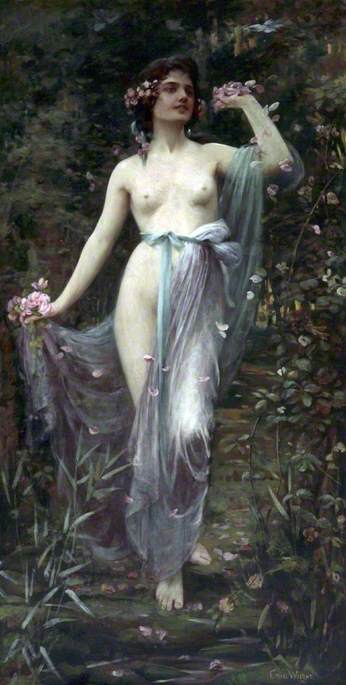
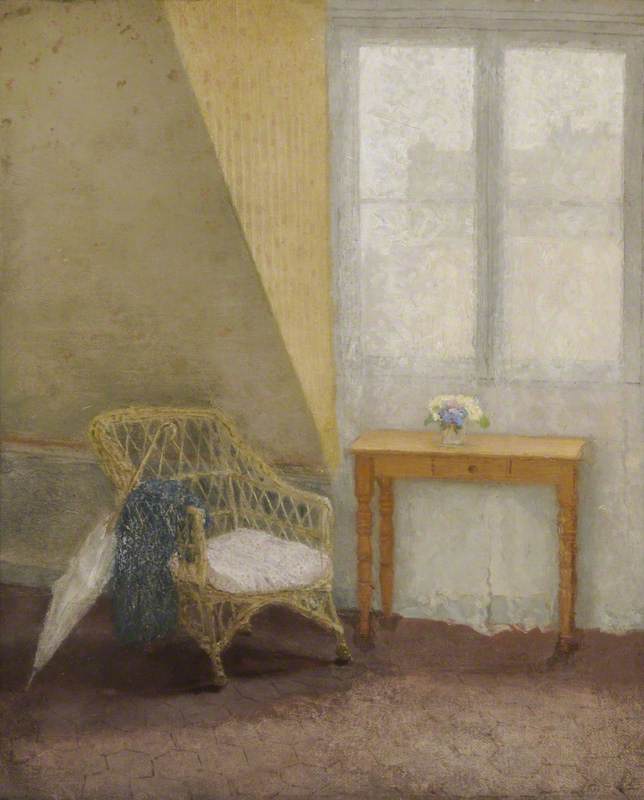
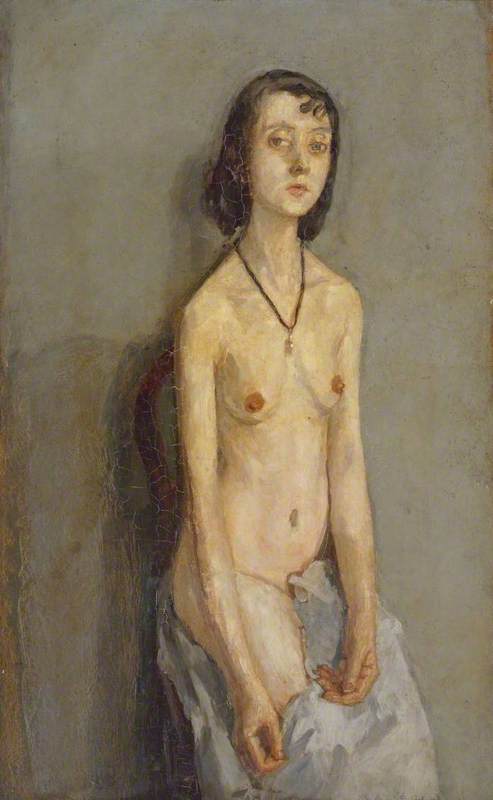

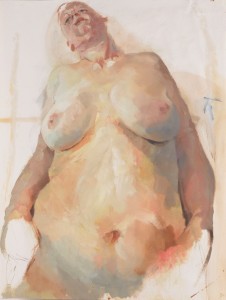
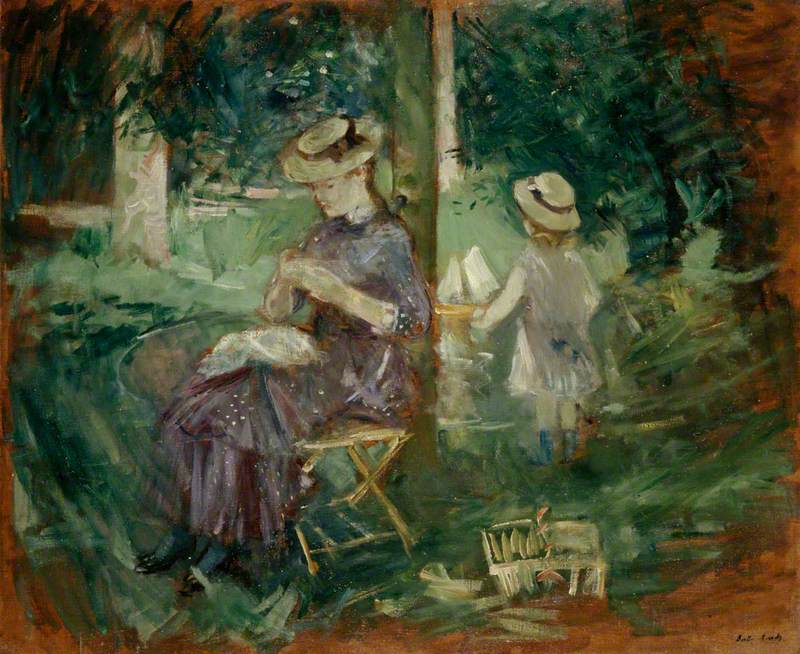
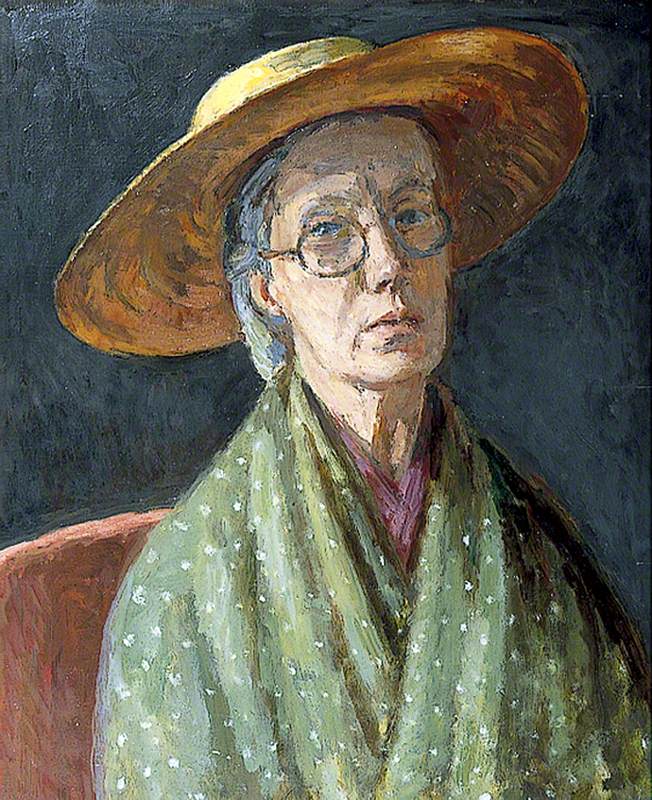
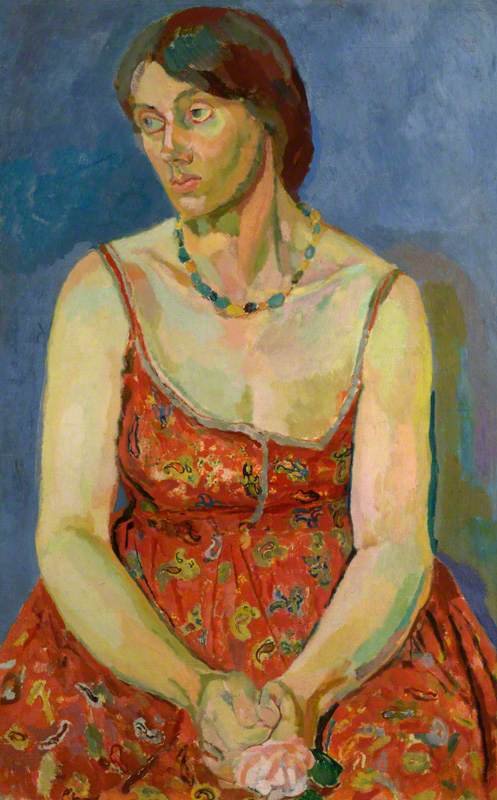
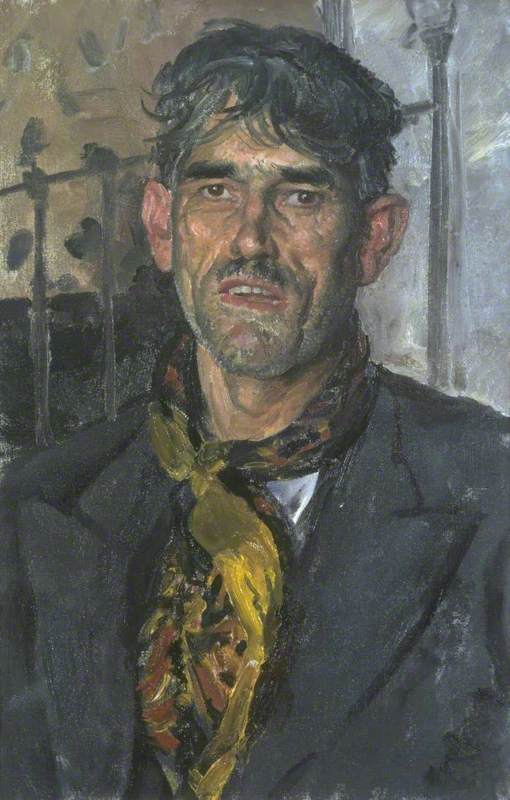
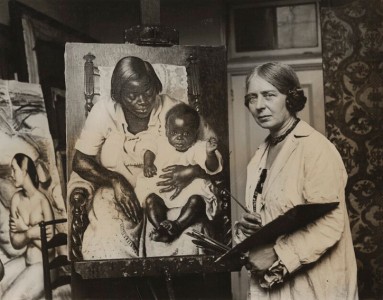


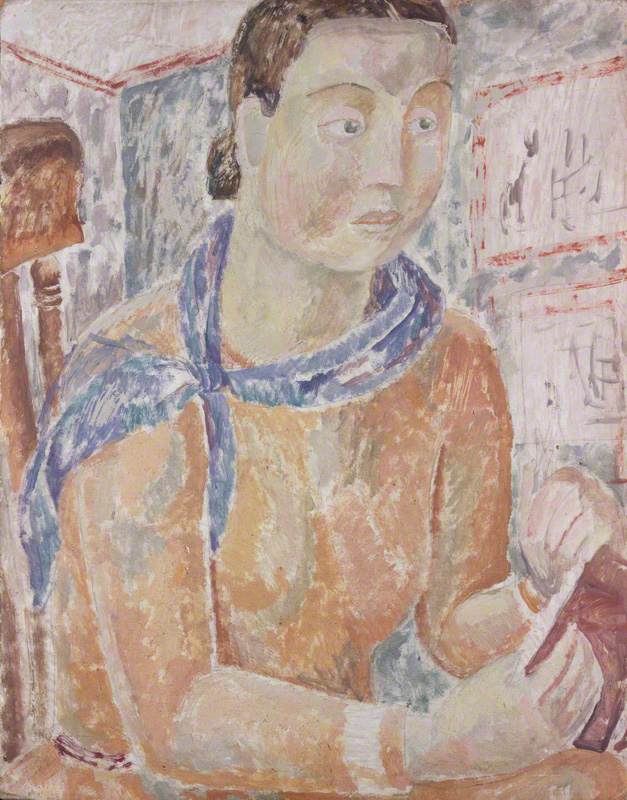
.jpg)
